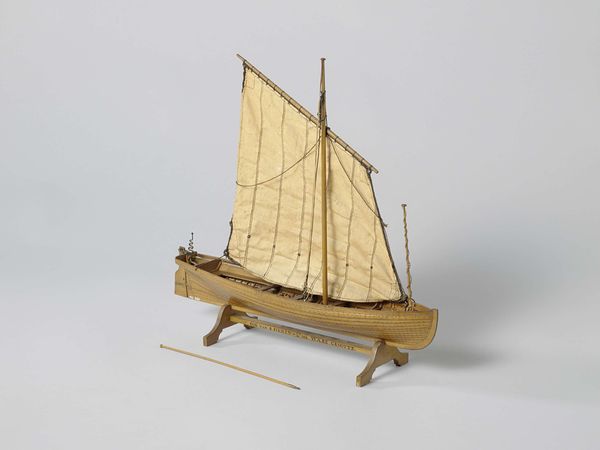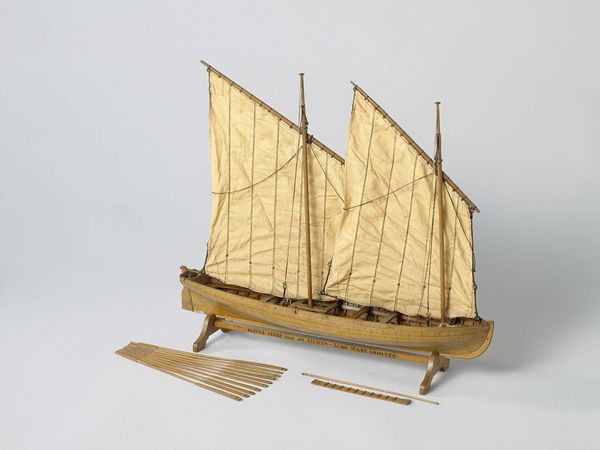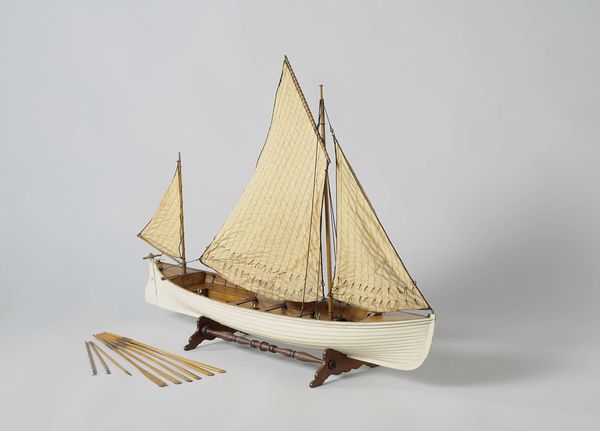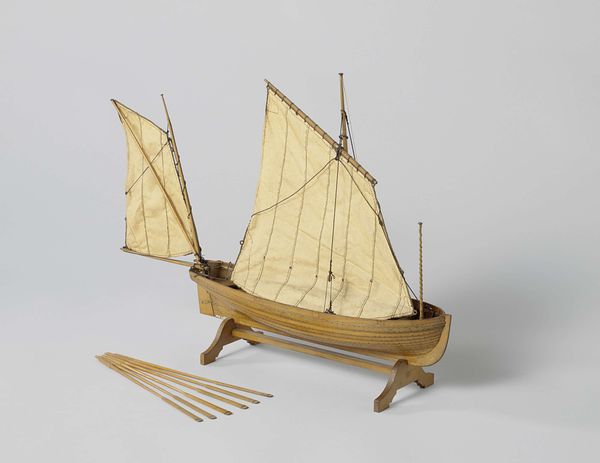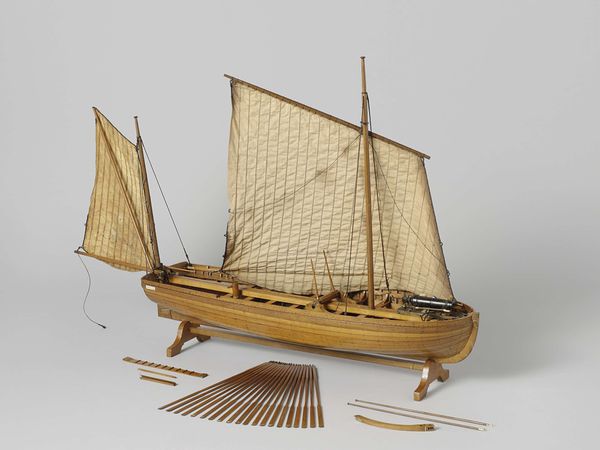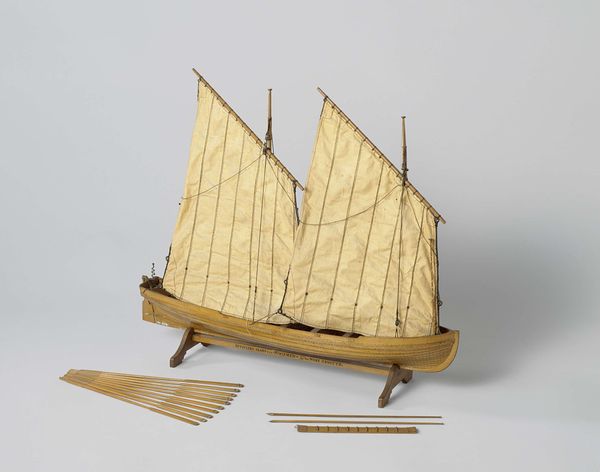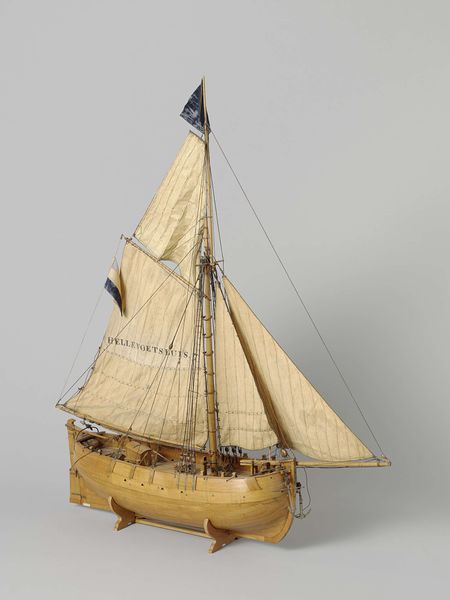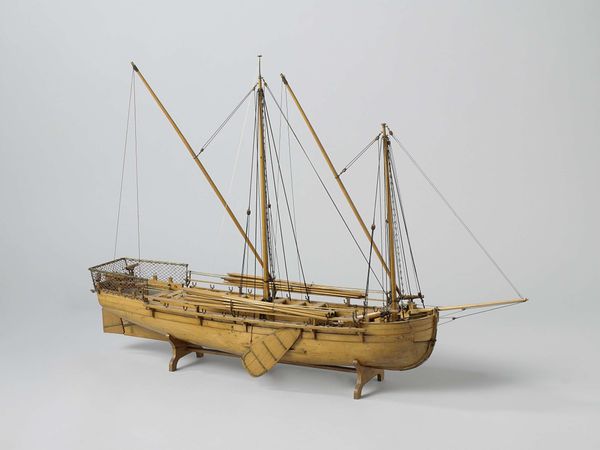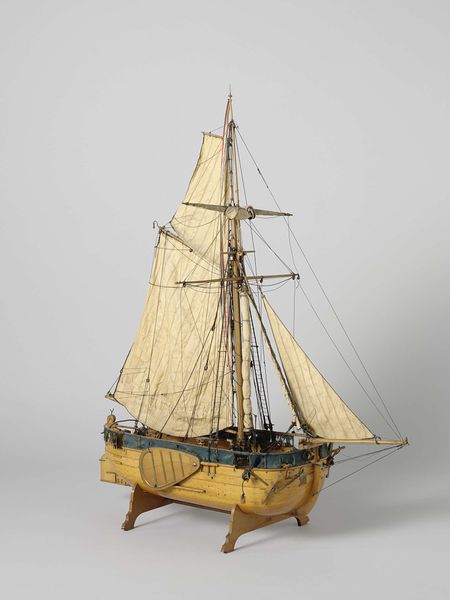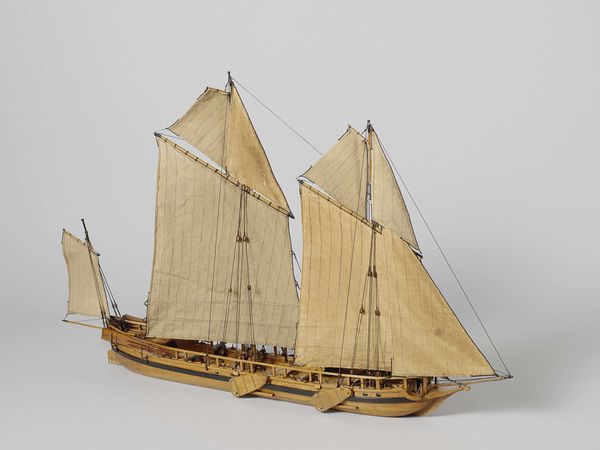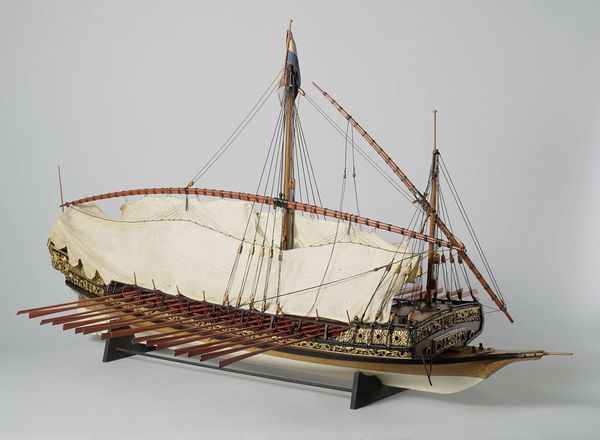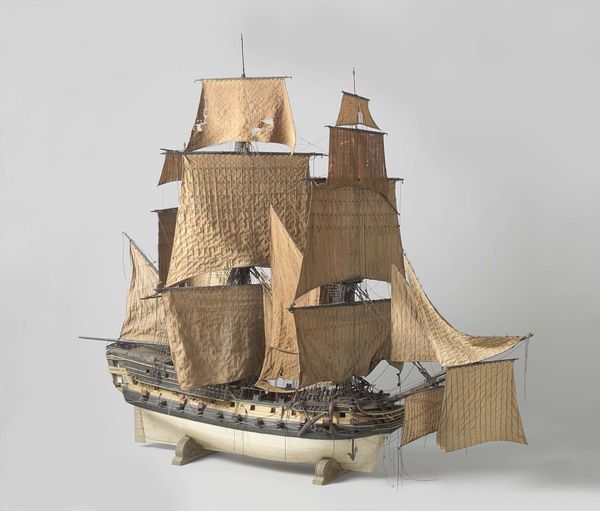
sculpture, wood
#
architectural sketch
#
architectural modelling rendering
#
architectural plan
#
architecture mock-up
#
structure design
#
traditional architecture
#
sculpture
#
architecture model
#
architectural drawing
#
wood
#
architectural proposal
#
prototype of a building
Dimensions: height 57.5 cm, length 89 cm, width 14 cm
Copyright: Rijks Museum: Open Domain
Curator: Looking at this model, I immediately think of a certain hushed stillness, like a ship captured in a bottle but on a grander scale. The materials, predominantly wood, give it a very warm, organic feeling, don’t you agree? Editor: Indeed. And what we're observing is a "Model of a War Galley," believed to have been crafted between 1800 and 1807 by Jochem Pietersz. Asmus. It’s not merely a decorative object, though; ship models served vital roles within the naval industry and broader maritime culture. Curator: So more than a toy; I find it interesting to look into it as a commentary on power dynamics and maritime imperialism. Who exactly were these galleys serving? Who was given the power to man them? How were decisions on board structured in line with global inequalities? Editor: Precisely. Naval vessels in this era projected considerable state power. These models could act as symbolic representations of national strength, influencing public opinion and solidifying the image of maritime dominance and technological advancement. Also, remember that building practices for such large galleys involved a range of technical knowledge – these models were commissioned by the wealthy merchant class. Curator: I notice that some people consider the ship models made at this time as emblems of national strength and others as decorative toys produced and consumed by men, can both be true, given our understanding of global history? Editor: They are, which tells us a great deal about the context around production and consumption during this period. By closely examining archival materials and maritime accounts, one can unveil its historical significance, demonstrating that Asmus' war galley existed for a variety of purposes. It had political meaning on multiple different levels for various communities, not just those most directly associated with nautical work or display, for example. Curator: When analyzing the model’s place among cultural practices and politics, gender, race and socio-economic considerations definitely intersect and add more texture to our overall knowledge. Editor: Indeed, this intersectional approach is crucial. Considering that models like this are both beautiful pieces and instruments of control changes how one views the object. I think next to no one saw such ships without recognizing the socio-economic underpinnings of their very being, or even considered sailing without similar cultural concepts influencing the direction they take on deck. Thank you, I've learnt from seeing this sculpture again. Curator: Absolutely. The cultural legacy of this galley ripples through time and is reflected even today as communities around the world find new ways to understand, navigate and challenge established historical concepts.
Comments
No comments
Be the first to comment and join the conversation on the ultimate creative platform.
